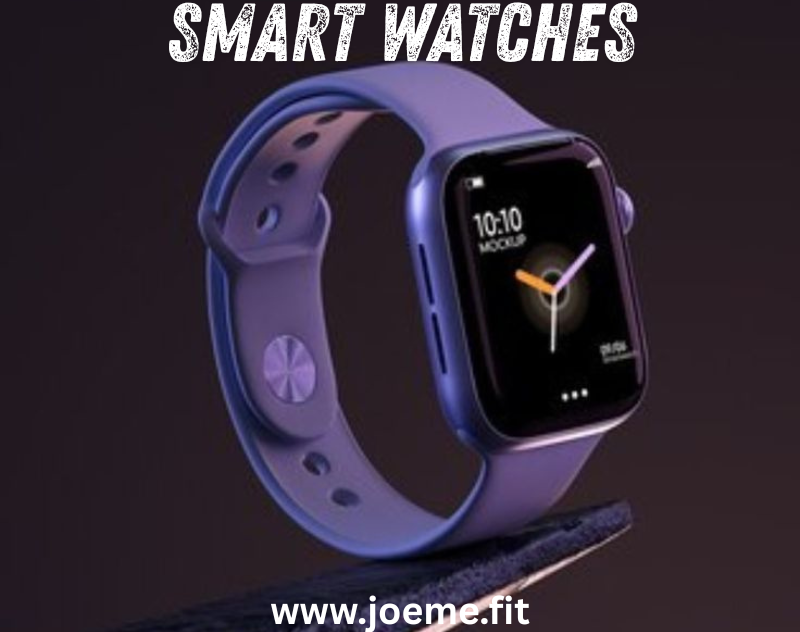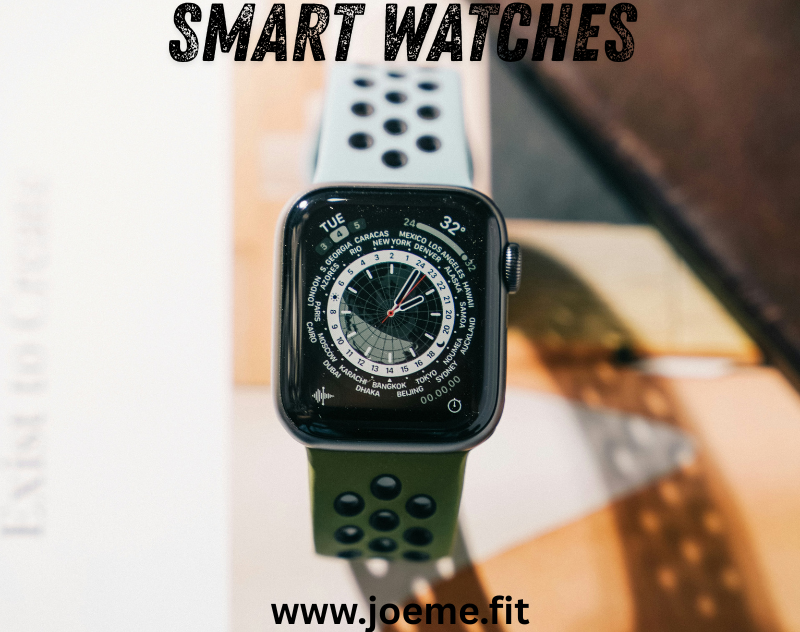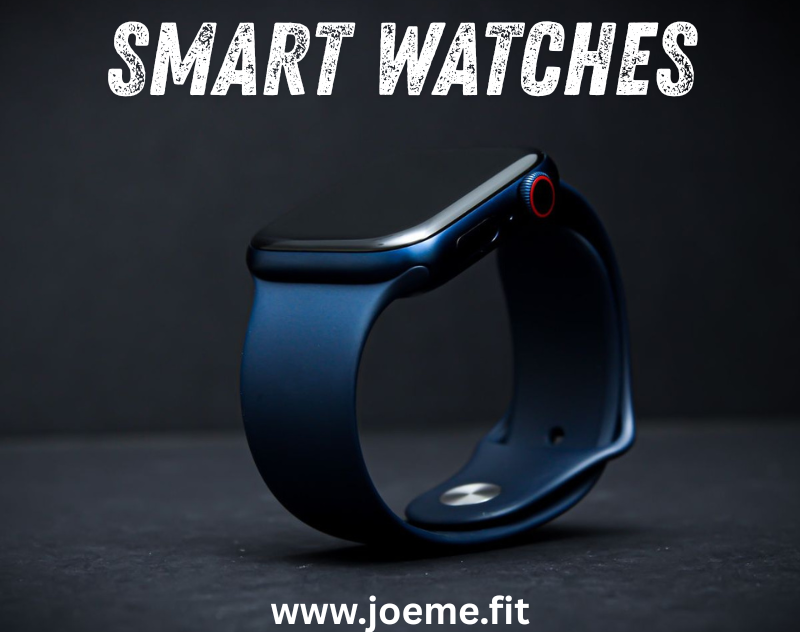The global smart watch market has already surpassed $50 billion, and with innovation accelerating, users are becoming more selective. They demand accuracy, longer battery life, seamless compatibility, and features that respond to real-world needs — not gimmicks. Smart watches aren’t just nice-to-have tech anymore; they’re becoming a core part of how we manage our lives.
Smart watches Top 10 Features Everyone’s Looking for in 2025

In this guide, we will explain the top 10 features everyone is looking for in smart watches in 2025 — what matters, why it matters, and how to choose the right watch for your lifestyle.
In 2025, smart-watches are more than trendy gadgets. They are practical, powerful, and increasingly vital tools for daily life. Whether it’s for fitness, productivity, or staying connected, the features people look for have become sharper, smarter, and more personalized. Below is a comprehensive breakdown of the ten must-have features consumers demand in modern smart watches. visit here!
Advanced Health Monitoring with Clinical-Grade Accuracy
Smart-watches in 2025 are redefining personal health monitoring. Users expect their wearable to deliver precise data, not vague estimates. Essential sensors now measure heart rate variability, continuous blood pressure, blood oxygen levels (SpO2), and even detect abnormal rhythms like atrial fibrillation. These health insights are no longer basic metrics—they’re used to make informed decisions about sleep, workouts, and even when to seek medical advice. Health dashboards are simplified, making it easy to see trends and track long-term wellness.
Modern smart-watches now provide real-time feedback, sync with health apps, and offer alerts when measurements fall outside healthy zones. The demand is clear: smart watches must now act like compact health partners.
Battery Life That Lasts Days, Not Hours
Short battery life is no longer acceptable. In 2025, smart watches are expected to run for several days on a single charge. This is especially important for users who rely on constant tracking for health, fitness, or travel.
Battery improvements include:
- Optimized low-power chips
- Smarter background task management
- Variable refresh rates on displays
- Efficient GPS and Bluetooth usage
Users also value fast charging—30 minutes to reach 80% is considered a minimum. Smart watches now offer power-saving modes that disable non-critical functions, extending battery life up to two weeks.
Table: Average Battery Life Comparison
| Smart Watch Model | Battery Life (Standard) | Power-Saving Mode |
|---|---|---|
| Mainstream Model A | 3 days | 10 days |
| Premium Model B | 5 days | 14 days |
| Fitness Model C | 7 days | 20 days |
Sleep Tracking with Recovery Insights
Sleep tracking has evolved. Today’s smart watches not only monitor when you sleep but also analyze how well you sleep. They break down stages of sleep—light, deep, REM—and deliver a morning recovery score. This score helps users determine if they should push through an intense workout or take it slow.
Recovery insights are based on:
- Heart rate variability (HRV)
- Resting heart rate
- Breathing patterns
- Movement during sleep
These features help people make smarter lifestyle choices, improve sleep hygiene, and avoid overtraining. Smart watches now offer gentle wake-up alarms during the lightest sleep phase, making mornings more natural and less abrupt.
Built-In AI Assistants That Actually Work
The new generation of smart watches comes equipped with responsive, context-aware AI assistants. These assistants can handle more than reminders. They summarize your day, send texts, control smart devices, and even suggest activities based on your schedule and habits.
The integration of AI into smart-watches provides:
- Voice-activated scheduling
- Intelligent workout suggestions
- Real-time language translation
- Fast answers to common queries
AI is becoming more conversational, less robotic. The on-watch experience now feels more like interacting with a human assistant than a speech recognition tool
Compatibility Across Ecosystems
Consumers don’t want to be locked into one brand. In 2025, smart-watches are designed to work seamlessly across Android, iOS, and other platforms. Pairing is quick. Data sharing is smooth.
Cross-platform benefits include:
- Syncing fitness data across apps
- Controlling smart homes from different ecosystems
- Integration with multiple payment systems
Interoperability also means that users don’t need to replace all their tech to enjoy the benefits of a new smart watch. Compatibility is now a key selling point.

Safety Features Like Fall Detection and SOS Alert
Safety has become one of the most requested features. Smart-watches now include fall detection, emergency calling, and live location sharing. These features are essential for elderly users, travelers, and anyone who trains outdoors alone.
Key safety tools include:
- Automatic SOS alerts after a hard fall
- Location pinging to emergency contacts
- Emergency shortcut buttons
- Pulse monitoring for early signs of stress
These functions are discreet but powerful. They give users peace of mind and make smart watches a trusted part of their safety routine.
Smart Fitness Coaching That Adapts
Forget generic workout plans. In 2025, smart-watches offer dynamic fitness coaching. They adapt plans based on your progress, recovery, and goals.
Fitness tracking includes:
- VO2 max estimation
- Real-time pace coaching
- Adaptive training loads
- Auto-paused runs and laps
Smart-watches also offer personalized feedback, like “You’re pushing too hard today” or “Try a lighter workout for better recovery.” Fitness apps on smart watches help users train smarter, not just harder.
Durable, Swim-Proof, and Workout-Ready Designs
Durability is essential. Smart-watches are worn during workouts, hikes, swims, and in unpredictable weather. In 2025, they must be built to survive it all.
Design priorities include:
- Water resistance (5ATM and above)
- Dust and shock protection
- Rugged glass displays (sapphire or Gorilla Glass)
Smart-watches now come with sports-ready bands, breathable materials, and touchscreens that work in rain or sweat. Style hasn’t been sacrificed for performance—modern watches look sleek while being tough.
Contactless Payments and ID Integration
Smart watches have become mini wallets. Users expect full contactless support, including NFC payments, ID access, and transport cards.
Contactless features now include:
- Mobile wallet integration (Google, Apple, Fitbit Pay)
- Transit access and fare payments
- Hotel keycards and digital ID storage
These features let users leave their phone or wallet behind, yet still get through their day seamlessly. It’s about simplicity and freedom.
Customizable Watch Faces and App Ecosystems
Personalization matters. Smart-watches now offer dynamic customization for both look and functionality. Users want the interface to reflect their daily needs.
Customization options include:
- Modular watch faces with changeable widgets
- Downloadable third-party apps
- Quick access panels and shortcut layouts
App ecosystems on smart watches are growing, offering tools for music, productivity, health, navigation, and more. People expect their watch to adapt just like their phone.
FAQs
Q1: What is the most important feature in smart-watches in 2025?
A1: Health monitoring remains the top feature, especially with more advanced sensors for heart rate, SpO2, and sleep recovery insights.
Q2: Are smart-watches now suitable for older adults?
A2: Yes. Safety features like fall detection, emergency SOS, and heart monitoring are designed with seniors in mind.
Q3: How long do smart watch batteries last now?
A3: On average, smart-watches in 2025 last between 3 to 7 days on standard settings, and up to 14+ days on power-saving modes.
Q4: Can I use one smart watch across Android and iPhone?
A4: Yes, many brands now support cross-platform compatibility without losing functionality.
Q5: Do all smart watches support payments?
A5: Most premium models support NFC-based payments and ID integrations, but it’s best to check specific models for compatibility.

Conclusion
As we move deeper into 2025, smart watches are no longer just optional tech accessories — they’ve become practical tools that support how we live, work, and stay healthy. The most sought-after features reflect real user needs: reliable health monitoring, extended battery life, accurate sleep insights, and compatibility across platforms. People aren’t just looking for convenience; they want technology that adapts to their lifestyle, responds to real-time situations, and helps them make better decisions every day.
From safety alerts and contactless payments to AI-driven productivity and personalized fitness guidance, the smartest smart-watches now offer a well-rounded package built for everyday use. The shift is clear: consumers value function over flash, and smart watches that prioritize substance are leading the way.
Choosing the right smart watch in 2025 means knowing which features actually matter to you — and investing in a device that keeps up without holding you back. Whether you’re focused on health, performance, or simplicity, the modern smart watch has something for everyone — and that’s exactly what makes it worth paying attention to.